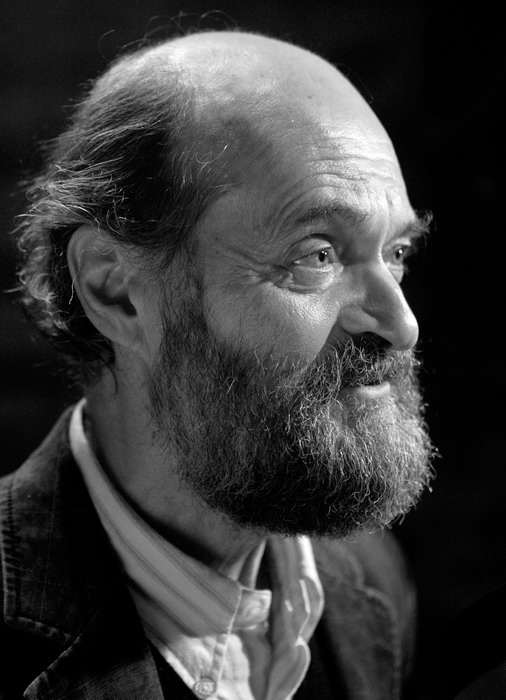Arvo Pärt’s austere music transcends time and place

The Tallinn Chamber Orchestra and the Estonian Philharmonic Chamber Choir performed music of Arvo Pärt Saturday night at Carnegie Hall.
Arvo Pärt is, if not the most popular contemporary composer, certainly the most beloved. The crowd that came out to see a concert of his music at Carnegie Hall on Saturday night was notable not only for its variety but for its concentration towards the music and adoration of the man himself.
There’s a lesson hidden in plain site there for classical music organizations chasing new audiences as their old subscribers die off. Pärt has crossover appeal but does not make crossover music, there’s no sense in his aesthetic that he’s even aware of any of the trends or stars in popular music over the past fifty years.
That the Estonian composer’s music tends to be beautiful helps, but the nature of that beauty matters. His sound world is austere, slightly hermetic, rigorously made, and he never panders. The style is called “tintinnabuli”—little bells—which is evocative but misleading. The ubiquitous sound he creates is etched, hard, like a cut diamond. His music rings but with an edge.
The concert program, played and sung by the Tallinn Chamber Orchestra and the Estonian Philharmonic Chamber Choir, conducted by Tönu Kaljuste (all musicians long associated with his work), spanned over forty years, from Fratres and Cantus in Memory of Benjamin Britten from 1977 to Adam’s Lament from 2009. It was organized and presented by The Arvö Part Project, conceived by two faculty members at St. Vladimir’s Orthodox Theological Seminary. The project “seeks to explore the connections between Orthodox theology, spirituality, and liturgical life and Pärt’s oeuvre.”
The composer has pointed out that his “philosophy” comes out of his Orthodox faith. For his liturgical music to touch so many outside that faith, including atheists, might smack of cultural slumming from listeners, but his aesthetic—spiritual without being soporific or maudlin—speaks to music lovers with the same direct human sympathies as does Paul Robeson singing “There is a Balm in Gilead.”
And there is the bracing abstraction to keep the senses on edge. Fratres is one of his great masterpieces and the work that made him famous in the ECM recording from Gidon Kremer and Keith Jarrett. The Talinn Orchestra played it in an arrangement for violin soloist—concertmaster Harry Traksmann—string orchestra and percussion. Fratres has been arranged in many different ways, and rather than diluting the music, each arrangement has made the piece stronger, revealing facet after facet.
Traksmann jumped off the hypnotic arpeggiations with an intensity that almost had the bow flying out of his hand. But the music, and Kaljuste’s quietly commanding, minimal conducting kept him together, and was elegant, with a deeply felt core of strength.
This is not the only group that plays Pärt’s music, but they are the only one that can maintain a blade-like precision and strength of intonation that seems to carry the resonance of a church with it, even in the mellow acoustics of Carnegie. The achingly simple Cantus—a repeated descending string line, some counterpoint, a chime—was case in point, though the audience’s desire to show their appreciation drowned out the complex decay of the last chime stroke.
The instrumental pieces were warm-ups for the choral works: Adam’s Lament, Salve Regina and Te Deum. The first is not strictly liturgical, but absolutely Orthodox philosophy, from a meditation by St. Silouan. The short, even phrases, the clarity of the counterpoint and the certainty of the harmonic rhythm are where the ringing sound of the music comes from: the structural spaces in the compositions are there for filling by the resonant architecture of a church, antiphony between ceremonial music and ceremonial space.
In the secular concert hall, the simple beauty and feeling of settings like “My soul wearies for the Lord” is still powerful, especially with such affecting, illuminating singing. The austere structural means of Salve Regina had a sublime expression. Where comparable settings like Josquin’s mostly affect the untrained ear, it’s easy to hear how Pärt’s moving pieces come together into a whole, and, like Stravinsky’s neo-classical music, this is a great intellectual and aesthetic virtue.
Te Deum is from the same mid–1980s period that emphasized utter simplicity and produced the great Passio, and is that work’s equal. Closing the concert, it was the most church-like, with the chorus divided into three parts, the altos and basses flanking the orchestra and the tenors and sopranos, with their floating, angelic harmonies, behind.
Cycling between the modal tonal centers of D and A, alternating between triadic homophony and polyphony, rocking back and forth from minor to major, this was the clearest expression of Pärt’s faith and philosophy. The music could belong to any era, the ritual of the service it’s built on holds the passage of time in abeyance, the shape moves from meditation to transcendence. One needn’t be Orthodox, or have any kind of faith, to hear the beauty that faith can give through those that do believe.
The Arvo Pärt Project continues with a performance of Kanon Pokajanen 7 p.m. June 2, at the Temple of Dendur, Metropolitan Museum of Art. arvopärtproject.com.